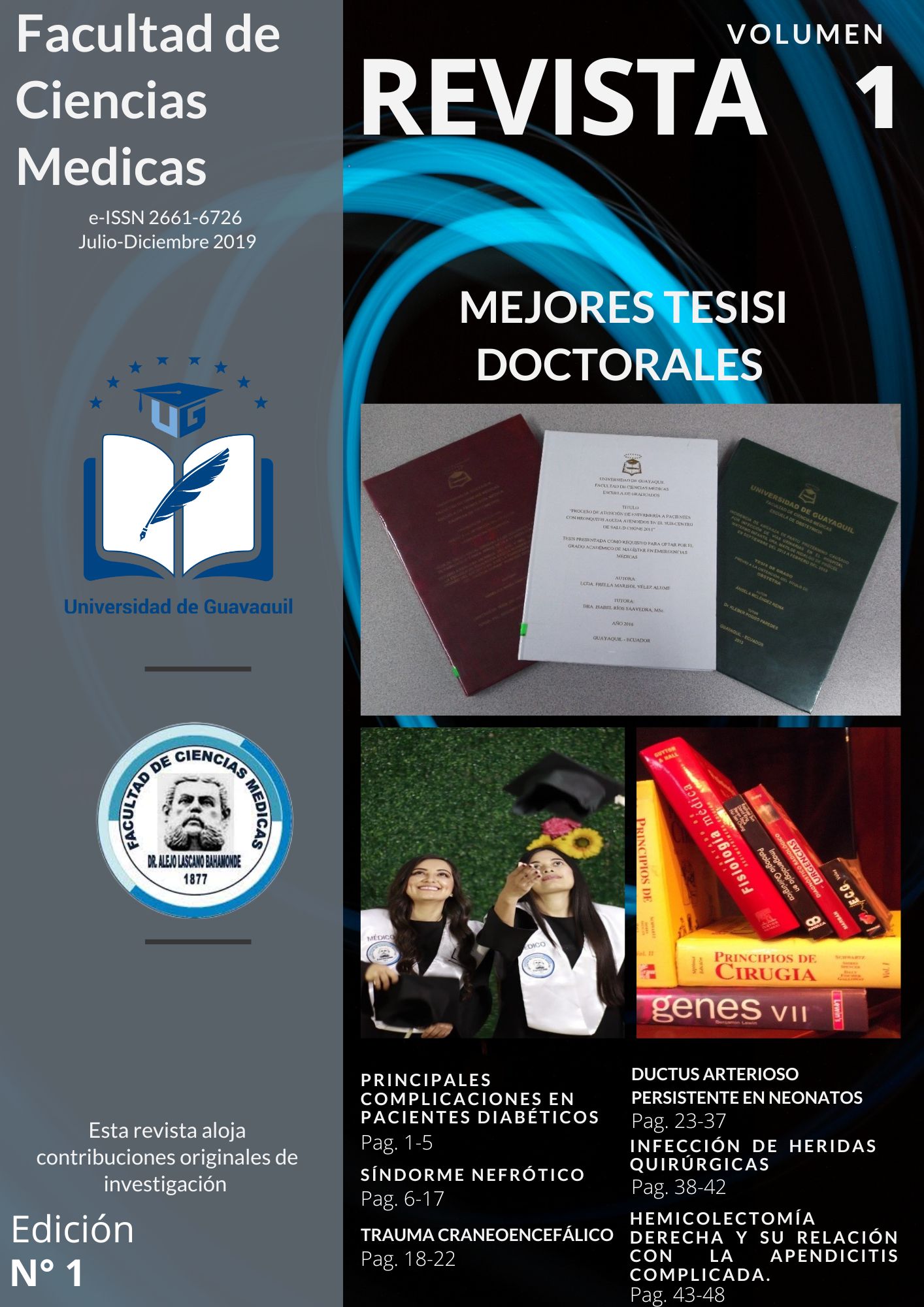Infection of abdominal surgical wounds: Assessment of advanced healing results in the hospitalization area
Keywords:
Infections, abdominal surgical wounds, hospitalizationAbstract
The development of surgical wound infection is related to the degree of bacterial contamination before and during surgery, the virulence of the infecting organism, and the host's defenses. It is the most frequent cause of nosocomial infections among hospitalized patients and represents 40% of the causes of nosocomial infection in surgical patients.
Objectives proposed were: Define the prevalence of the most frequent microorganisms in abdominal surgical wound infection, identify the influence of hospital stay with the risk of presenting abdominal surgical wound infection. Know the prevalence of abdominal surgical wound infection according to age ranges and determine the prevalence of abdominal surgical wound infection according to gender.
It was a descriptive, retrospective, non-experimental cross-sectional investigation. It corresponded to an investigation carried out during the period January-December 2019 at Abel Gilbert Pontón Specialty Hospital, Guayaquil, Ecuador, a total of [n = 157 (100%)] samples were taken that met the criteria to be included in this study , of which (83.4%) were colonized by Gram negative bacteria and (16.6%) by Gram positive bacteria, leading the microbiological profile Escherichia coli [n = 55 (35%)] with a prevalence of 25% , patients that stay in the hospital within the first 34 days presented a greater probability of abdominal surgical wound infection and in relation to the age range and gender, the age group of 41 to 63 years had a prevalence of 41.2%, and the female gender of 37%.
References
Francisco Javier Gómez-Romero MFPJFNG. Prevención de la infección de sitio quirúrgico: análisis y revisión narrativa de las guías de práctica clínica. Cirugía Española. 2017 Septiembre; 95(9).
Desye M, al e. pubmed. [Online].; 2020 [cited 2021 02 23. Available from: https://pubmed.ncbi.nlm.nih.gov/32258103/.
AL AARE. INFECCIONES QUIRURGICAS. 2nd ed. Garriga JMªBPyXG, editor. MADRID: Arán Ediciones, S.L; 2016.
M. Alonso-Isa JMPALISea. Infección de herida quirúrgica en urología. Análisis de factores de riesgos y microorganismos asociados. ACTAS UROLOGICAS ESPAÑOLAS. 2016 JULIO; 41(2).
Tovar JR, Badia JM. Medidas de prevención de la infección del sitio quirúrgico en cirugía abdominal. Revisión crítica de la evidencia. CIRUGÍA ESPAÑOLA. 2016 Apr; 92(4).
Blanca Liñán Alvarado EDP. epository.ucc.edu.co. [Online].; 2018 [cited 2020 DICIEMBRE 27. Available from: https://we.tl/t-VURqvoFRfu.
Kristen A Ban M, al e. PUBMED. [Online].; 2016 [cited 2020 DICIEMBRE 27. Available from: https://www.sciencedirect.com/science/article/pii/S0195670117301354.
Martina Bañales EA. Incidencia de infección del sitio quirúrgico en pacientes operados en el Hospital Pasteur (Montevideo), julio-agosto 2017. ANALES DE LA FACULTAD DE MEDICINA UNIVERSIDAD DE LA REPUBLICA URUGUAY. 2018; 5(1).
López-Crespo, al e. FACTORES ASOCIADOS A INFECCIONES DE SITIO QUIRÚRGICO EN CIRUGIA ABDOMINAL DE EMERGENCIA. REVISTA PERUANA DE INVESTIGACION EN SALUD. 2018 Oct; 2(2).
PEREZ DAV. https://cdigital.uv.mx/. [Online].; 2017 [cited 2021 01 22. Available from: https://cdigital.uv.mx/bitstream/handle/1944/49504/VegaPerezA.pdf?sequence=1
Humberto Guanche Garcell ea. Incidencia de infección del sitio quirúrgico y cumplimiento de prácticas de prevención en apendicectomía y cirugía herniaria. Revista Cubana de Cirugía. 2018 Dec; 57(4).
Fanny Isabel Zhunio Bermeo ea. Factores asociados a las infecciones en el sitio quirúrgico en Hospitales Ecuatorianos. Scholarly Journals. 2019; 38(6).





